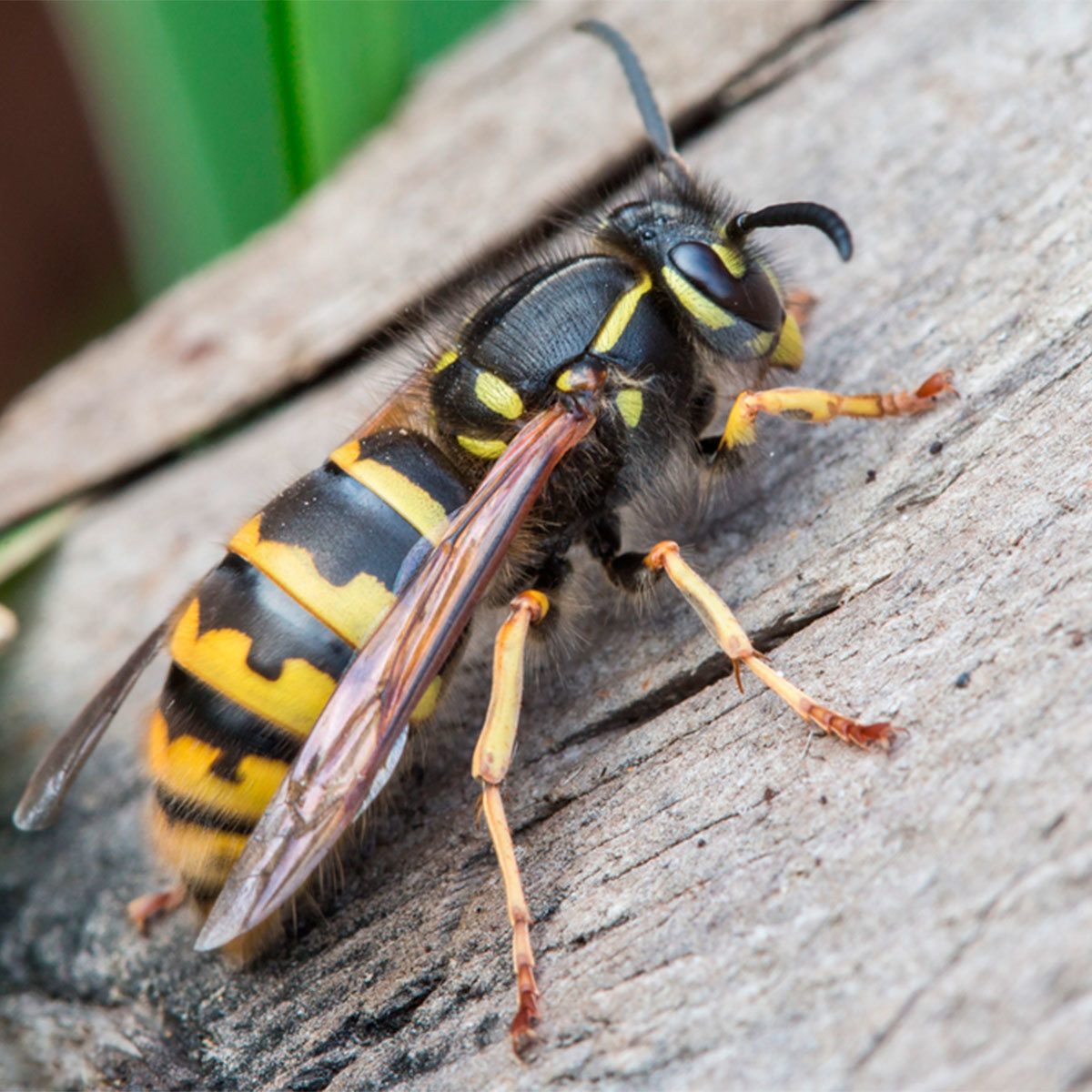Use this handy guide to know whether it's a bee or wasp buzzing through your backyard.

6 Key Differences Between Bees and Wasps


While we often associate bees and wasps with the danger of an unpleasant sting, there’s so much more to these flying insects. In fact, bees are among the most important creatures on the planet when it comes to their impact on humans and the planet’s natural ecosystems. Wasps also often get a bad reputation, but they play key roles too, especially in controlling garden pests. Despite their similar shapes and flight patterns, bees and wasps differ in appearance, behavior and diet. Knowing these differences can help you know whether you have a helpful pollinator in your garden or a potentially dangerous wasp nest. Use this handy guide to know whether it’s a bee or a wasp buzzing through your backyard.
Differences in Body Shape
Wasps have slim bodies and narrow waists that connect the thorax and abdomen. Bees have thick, rounded bodies with stripes. Plus, are you interested in beekeeping?
Look at the Wing Position
Two sets of wasp wings run parallel to the abdomen when folded down. With bees, two sets of wings rest on top of the thorax (middle part of the body) when folded down.
How Many Legs Do Bees Have?
Bees have six short, bulky legs that are flat, not rounded. Wasps have six long, skinny legs with several spines.
Do Bees Die When They Sting?
Sometimes. A honey bee’s stinger stays in the victim, meaning the bee eventually dies. Other bees can sting multiple times. Conversely, the stinger stays with the wasp, allowing it to sting several times.
Do Wasps Pollinate Plants?
Bees and wasps are both pollinators that will visit backyard blooms to sip on sweet nectar. Bees have pollen-collecting hair on their bodies, and females also have hair on their legs and bellies. Honeybees are some of our most important pollinators, but their populations are declining worldwide. “It’s a combination of factors that humans have created to cause bee populations to decline,” Joyce Corbett of Classic Courtyards says,”like reducing their natural habitats and food supplies, using chemical pesticides and increasing global temperatures.”
What Do Bees and Wasps Eat?
Bees often get blamed for the aggressive and annoying tactics of wasps. As strict nectar and pollen eaters, bees spend most of their time foraging at flowers. If you don’t bother them, they won’t bother you. Wasps, however, are predators always on the hunt for their next meal, whether that be insects or the food at your barbecue.
Are Bees or Wasps More Aggressive?
“Bumblebees and honey bees don’t bother you unless you step on them or sit on them, ” Corbett says, “while wasps and yellow jackets are brutally aggressive when protecting their nests and can sting multiple times.”
FAQ
Why do wasps seem more active in late summer?
Wasp populations are at their highest in late summer, while their natural food sources simultaneously begin to dwindle. Wasps will begin to seek out food from other sources like food at outdoor parties, so are more noticeable to humans.
Are wasps useful or just pests?
Other insects are a primary food source for wasps, so they can be helpful to keep unwanted pest populations down. They also help to pollinate flowers.
About the Expert
- Joyce Corbett is the owner of Classic Courtyards in West Springfield, Massachusetts. She has over forty years of landscaping design and installation experience.




















